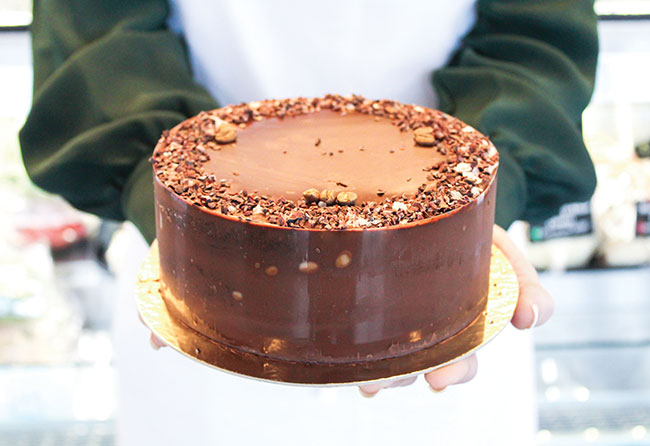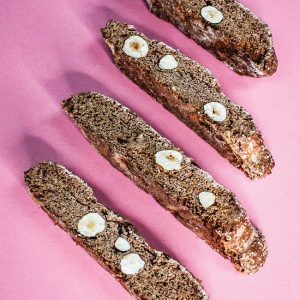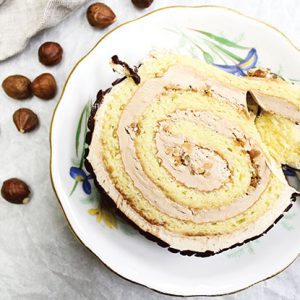
Gluten Free Baking
January 28, 2021
By Karen Barr
The challenges of baking without gluten
 Origin Bakery’s Chef Tara Black’s Chocolate Ganache Cake is a hit for those with and without Celiac Disease. Photography courtesy of Kristine Wilkinson
Origin Bakery’s Chef Tara Black’s Chocolate Ganache Cake is a hit for those with and without Celiac Disease. Photography courtesy of Kristine Wilkinson Gluten is a group of proteins found in wheat, rye, barley, and their cross-bred grains. Although the definition is easy to understand, developing a gluten-free product for bakeries, pastry shops, hotels, and restaurants takes a lot of forethought.
The customer base for gluten-free products range from clients suffering from medical issues such as celiac disease (CD), to those who have chosen to eliminate gluten for personal reasons. Others may just be curious about trying new grains.
According to the Canadian Celiac Association’s website, CD is estimated to affect 1 per cent of the population. In these individuals, gluten damages the absorptive surfaces of the small intestine, resulting in numerous symptoms, which can ultimately affect the body’s ability to absorb nutrients.
“You can’t call a product made in a bakery that uses wheat flour gluten-free,” explains, Tara Black, a Red Seal pastry chef, who owns Origin Bakery, a gluten-free establishment, in Victoria, British Columbia, with her business partner Marion Scott. “But you can call it wheat free,” she continues. The reason for this label being cross contamination.
Where a customer who eliminates wheat flour by choice will probably not be worried about cross contamination in their baked goods, a celiac customer would be terrified. Some of the first questions Black encountered when selling her products were, “Did those tongs touch any wheat?” And, “did you use a separate cutting board?”
To create the vast range of baked goods at Origin Bakery, Black says, “We use a variety of over 20 gluten-free ingredients to replace wheat flour, and there are different combinations in each of our products.” She notes that each recipe has been custom created and points to the breads as an example, “All of our breads taste different, because we do not use a master blend of just a few flours.”
While developing bread recipes, Black noticed that supermarkets were offering the gluten-free community only rice and starch-based products. “We wanted to create a soft white bread that our celiac customers remembered eating, but no longer could,” says Black.
The Vega bread was developed in the company’s first year of business and is still the top seller as an all-purpose bread. It is made with a combination of ground millet, potato starch, arrowroot starch, tapioca starch, sorghum flour, quinoa flour, amaranth flour, chia gel, honey, hemp hearts, extra virgin olive oil, yeast, sea salt, golden flax flour, xanthan gum, baking powder and water.
“My favourite is the oat bread,” says Black. “It’s dense without being heavy. I like it smothered with homemade raspberry jam.” This bread is made with water, pure oat flour, milk, sorghum flour, ground millet, pure oat bran, arrowroot starch, tapioca starch, amaranth flour, teff flour, golden flax flour, B.C. honey, butter, yeast, xanthan gum, baking powder, sea salt, apple cider vinegar, baking soda, and gelatin.
Gluten free does not mean flavourless. Chocolate cakes do not rest in the display case for long. The vegan ganache cake is a chocolate chia cake, filled with two layers of chocolate ganache, simply made with fine quality dark chocolate and coffee.
For traditional cake lovers, there is the classic carrot cake with a twist of white chocolate in the cream cheese icing. Cakes ingredients include cane sugar, carrots, expeller-pressed canola oil, free-range eggs, brown rice flour, sorghum flour, pure oat flour, arrowroot starch, garfava flour, tapioca starch, fresh ginger, baking soda, baking powder, guar gum, spices, and vanilla bean.
In the cookie collection, customers find large peanut butter chocolate-chip cookies and other flavours, including almond fudge, oatmeal raisin, and chocolate-ginger. Sugar cookies change seasonally and could include turtles or starfish shaped cookies in the warmer months. Pastries include eclairs, galettes, butter tarts and chocolate praline tarts.
On the breakfast menu, customers come to rely on simple favourites like muffins or scones, as well as take-away items including granolas, muesli, and gluten free mixes for pancakes and muffins
What advise would Black give bakers and pastry chefs who want to accommodate celiacs, while maintaining a traditional wheat baking kitchen? “Find a gluten-free bakery that matches the quality of the products you produce and either buy their products to carry or ask them to create your custom recipes.”
Creating gluten-free products may present some challenges. However, it is a growing segment within the Canadian marketplace. Offering wheat-free options, or carrying gluten-free products will help savvy businesses enter the arena, giving clients what they want.
Karen Barr writes about arts, culture and cuisine. She is a graduate of George Brown College and is a Red Seal pastry chef.
Print this page


Leave a Reply